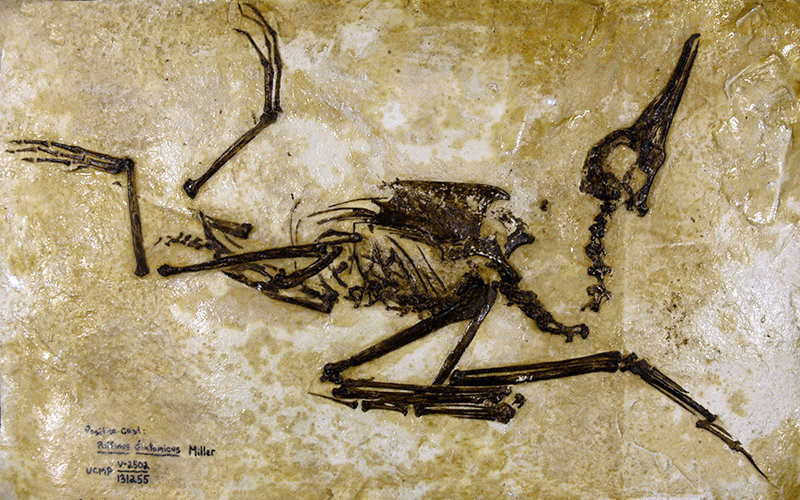
Until a few million years ago, penguin-like seabirds once dominated California’s coasts. But due to climate changes in the state between 5-17 million years ago, this flightless seabird or “mancalline” became extinct, and other seabirds changed drastically, a student-led Cal State Fullerton study has found.
Geology graduate Peter Kloess studied over 500 seabird fossils from across the state, including 242 fossil seabirds from Orange County, mostly specimens housed at the John D. Cooper Archaeological and Paleontological Center.
“By studying seabird fossils from around California, we were able to observe the effects of changing climate on past seabird communities along the coast,” said Kloess, who conducted the study for his master’s thesis, under the mentorship of James Parham, assistant professor of geological sciences.
“This study shows how animal groups change through time in response to climate and can help to predict the impact of future climate change on them.”
“A Specimen-based Approach to Reconstructing the late Neogene Seabird Communities of California” study was published in Palaeogeography, Palaeoclimatology, Palaeoecology, an international peer-reviewed journal.
While many of the bird families in the study are still present today, it was the extinct ones that fascinated Kloess. In addition to the mancallines, which looked a lot like modern-day penguins, huge, extinct bony-toothed birds with 21-foot wingspans also existed during the period of time of the study.
Kloess visited museums from San Diego to Berkeley to examine fossil seabird specimens, along with 150 specimens in the collection at the Cooper Center, a partnership between CSUF and Orange County Parks. For the study, the researchers used the hundreds of fossils to compare what kinds of seabirds lived at different times. Then they compared those changes to global temperature, sea level and ocean currents.
For example, the study found that “alcids,” such as puffins, auks and their relatives, became more dominant as “sulids” — like gannets and boobies — declined as climate cooled from 17 to 10 million years ago, said Parham, who is the Cooper Center’s paleontology faculty curator.
“This coincides with cooling and shallower environments being preserved in the fossil record,” he added, noting that the extinct manacallines became extremely abundant around 10-5 million years ago, when the climate became even cooler.
“These mancallines were common in California, probably as result of upwelling ocean currents making for a productive ecosystem just offshore,” said Parham. “They occurred alongside filter-feeding salmon and a few different species of walruses, representing a lost ecosystem that disappeared when climate and ocean currents changed again, and the planet slipped into the Ice Age.”
Kloess, whose interest in paleontology began with the dinosaur books his parents read to him as a child, earned his master’s degree in geology in 2015 and is now a doctoral student in integrative biology at UC Berkeley.
“Learning these and many other skills at CSUF prepared me for my Ph.D. program,” he said.
“Working on the study with Dr. Parham taught me invaluable lessons about formulating research questions, conducting data-collection trips to institutions across the state and seeing an investigative study through to completion.”